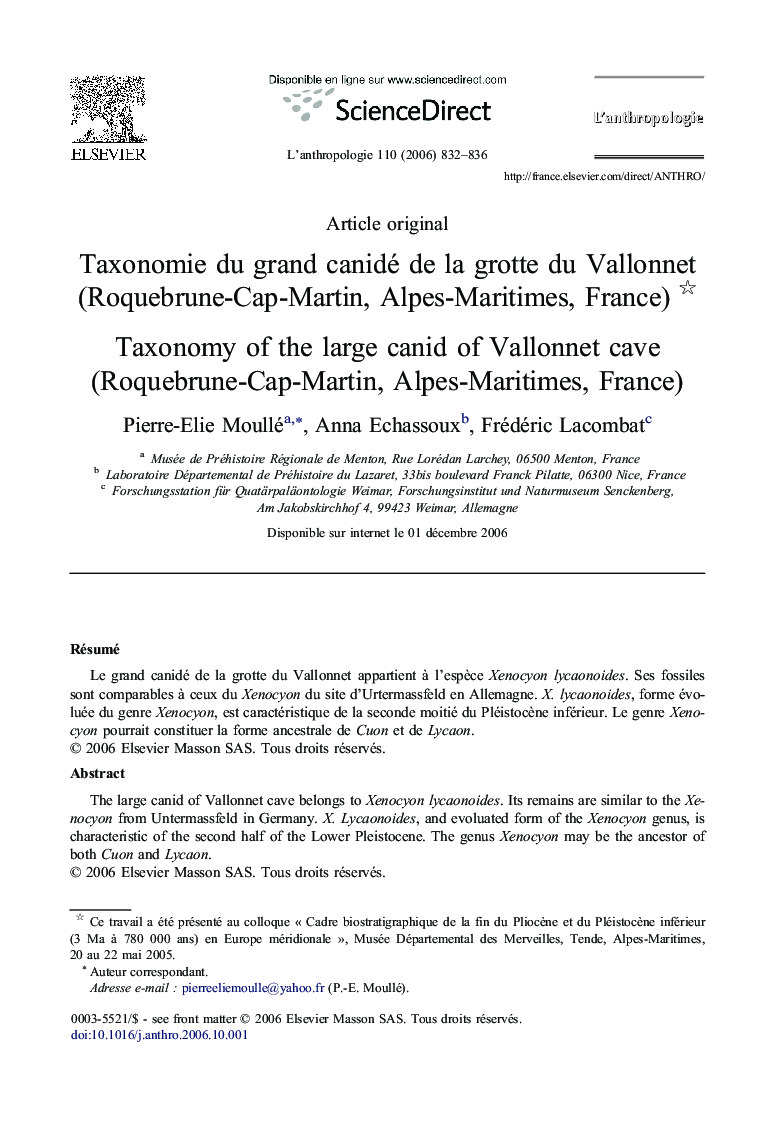| Article ID | Journal | Published Year | Pages | File Type |
|---|---|---|---|---|
| 1033853 | L'Anthropologie | 2006 | 5 Pages |
Abstract
RésuméLe grand canidé de la grotte du Vallonnet appartient à l'espèce Xenocyon lycaonoides. Ses fossiles sont comparables à ceux du Xenocyon du site d'Urtermassfeld en Allemagne. X. lycaonoides, forme évoluée du genre Xenocyon, est caractéristique de la seconde moitié du Pléistocène inférieur. Le genre Xenocyon pourrait constituer la forme ancestrale de Cuon et de Lycaon.
The large canid of Vallonnet cave belongs to Xenocyon lycaonoides. Its remains are similar to the Xenocyon from Untermassfeld in Germany. X. Lycaonoides, and evoluated form of the Xenocyon genus, is characteristic of the second half of the Lower Pleistocene. The genus Xenocyon may be the ancestor of both Cuon and Lycaon.
Keywords
Related Topics
Social Sciences and Humanities
Arts and Humanities
History
Authors
Pierre-Elie Moullé, Anna Echassoux, Frédéric Lacombat,
